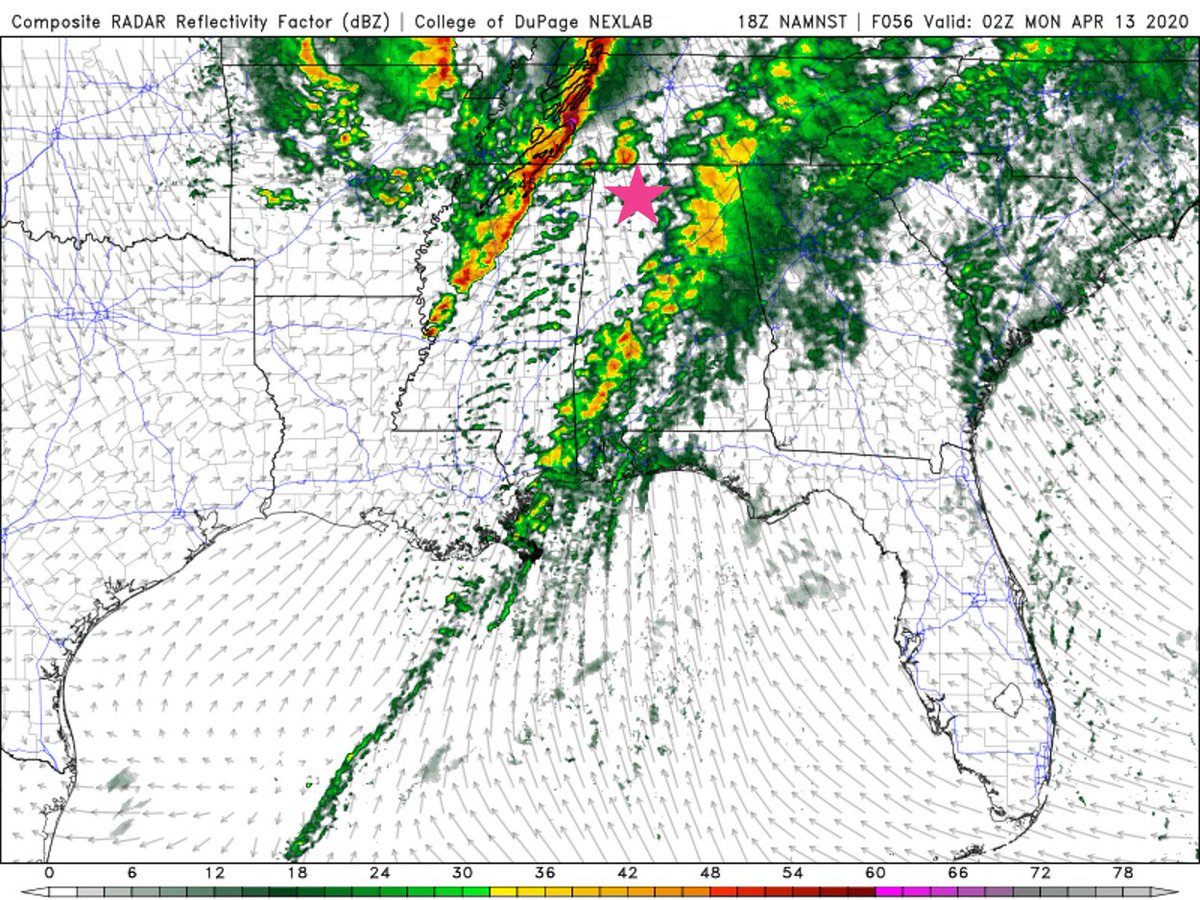So I& #39;ve been looking at the 18Z 3-km NAM (feel free to take me out back after this), and I noticed something that I think may be worthy of thought or discussion in light of our discussion earlier today. cc: @VORTEXJeff @skydrama @CameronJNixon
Since our discussion, I wanted to focus on what happens between what I called the NAM& #39;s "false flag" band of precip/conv that moves across AL in the late aft/early evening and the main boundary. The 18Z 3-km NAM maintains a similar solution to the 12Z run with that evolution.
As with the 12Z run, the 18Z run develops a very intense band of storms along the main boundary behind the false-flag band, and with the 18Z run going out further in time, it& #39;s clear these storms would likely pose a significant wind and tornado risk for N MS, N AL, and W/Mid TN.
But when you look at the region between the "false flag" band and the main frontal line, I become increasing concerned that the 3-km NAM is not realistically depicting the potential for isolated to scattered discrete supercells. And it& #39;s not just b/c the environment is insane...
For instance, if you grab a sounding from Courtland, AL (pink star), which is almost perfectly situated in the midpoint between the false-flag and main lines, you& #39;ll notice that there is substantial vertical motion from the sfc to just short of 300 mb, despite not being near...
...any notable convective feature in the model. To me this appears to be a byproduct of a combination of a broad sfc confluence zone, evident in the sfc wind vectors on the previous plot, and strong forcing for ascent driven by the the approach of the primary vort max.
It& #39;s also likely that some nascent shower activity being modeled is further augmenting that, since a larger sample of soundings shows variation in the magnitudes of vertical motion within that gap region. I& #39;m promise I& #39;m getting to a point here...
With weak capping, despite the 3-km NAM& #39;s typical PBL cold bias, I can& #39;t come up with a good reason why intense sfc-based supercells would not develop in that region given the simulated environment. And this wouldn& #39;t be the first time the CAMs failed to capture a Dixie...
...supercell event, particularly one where supercells were developing over the open warm sector. 11/29/16, our last big supercell outbreak, was a classic example of this, where we had tornadic storms arrive over 6 hr earlier than forecasted b/c none of the CAMs developed them...
...at all. Not a single one. I don& #39;t know if this is a PBL parameterization issue, a microphysics issue, or something else (I& #39;m not a modeling expert and I& #39;m self-aware of that). But I& #39;d be very leery about putting much weight on the NAM (esp the 3-km NAM) unless or until...
...we have more obvious answers to any of these questions. /fin

 Read on Twitter
Read on Twitter



